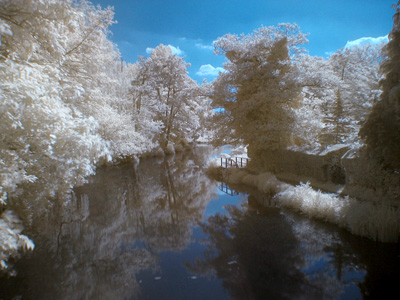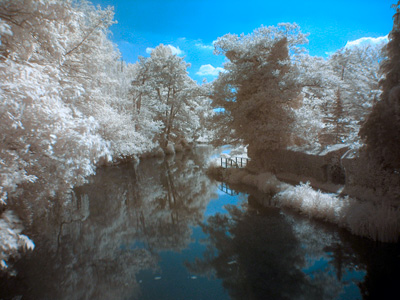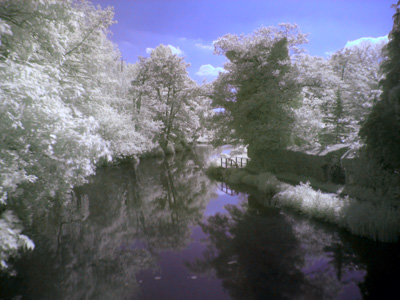He tells in his memoirs that in 1932 ...
... the Editor of the Daily Herald, Mr Spooner, suggested that I should try to get a picture of an audience in a theatre, during the showing of a film, when the whole house was in darkness. [...] So I went one evening to the Carlton Theatre in the Haymarket, during the performance of 'The Sign of the Cross, to see what could be done. Mr.Short, an expert from the Ilford Photographic Plate Paper and Film Manufacturers, came with me. By a priwous arrangement with the management of the theatre, six infra-red lamps had been fitted to the balcony. [...] Hidden by the darkness, and wthout attracting any one’s attention, I shot an audience I could not see, giving nine seconds' exposure. That is less than is required to take a phbtograph in a lighted room. [...] I made several experiments that evening with different exposures, varying from six seconds to ten seconds. I was very doubtful whether they would be successful, but when I developed the plate, they were as clear and sharp as though the shots had been taken in broad daylight.He also describes using the heat of a hot clothes iron to take an infrared image in his darkroom, with an exposure of an hour, and being asked by Ilford to photograph the plate manufacturing process (in the dark).
Some of his photos are held in the Getty collection, which you can find with this search.
He also mentions an infrared photograph of the 1932 Armistice Day commemoration at the cenotaph in London, which was taken (but not by him) using an infrared plate because of the poor weather. The image appeared in the Manchester Guardian on November 12th that year.
Jarchés autobiography, titled 'People I have Shot' is available on the internet archive, which claims that it is out of copyright. That may be the case in the USA but since he died in 1965 it will still be in copyright in the UK.












